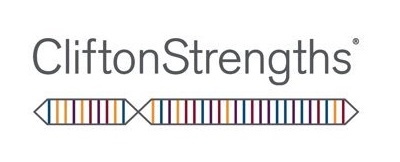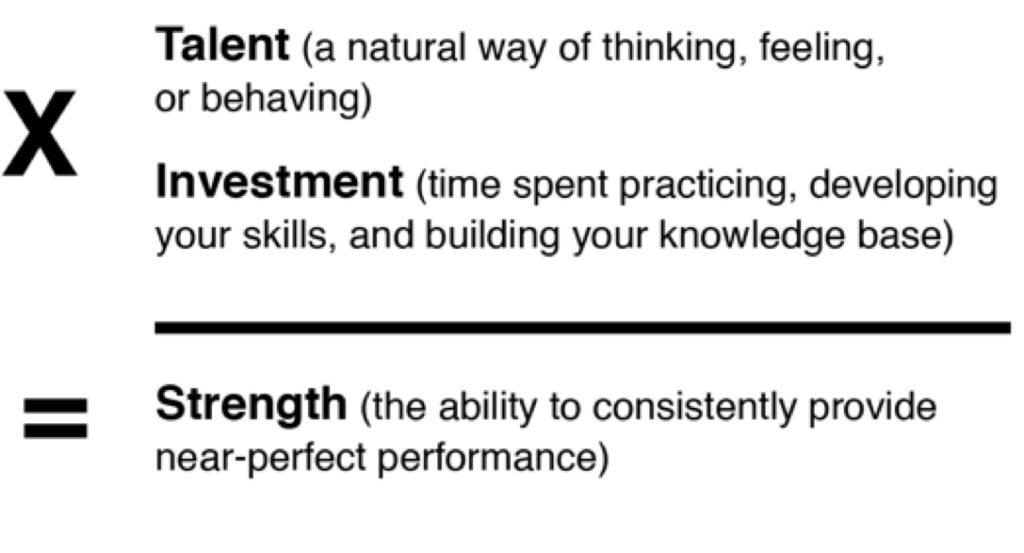Gallup CliftonStrengths
CliftonStrengths is an online assessment tool used to discover and develop your greatest talents. Operated by Gallup, the well-known global analytics and advice firm, this 177-question assessment measures your natural patterns of thinking, feeling and behaving and categorizes them into the 34 CliftonStrengths themes.
Thank you for visiting and your interest in CliftonStrengths at NC State. As we work to build out this site, please contact Adam Culley (alculley@ncsu.edu) with any questions.

“What will happen when we think about what is right with people rather than fixating on what is wrong with them?”
– Don Clifton | 1924-2003
Our office, along with multiple other units on campus, uses CliftonStrengths as a tool to complement many of our programs, giving us a common language to help students and others better understand themselves and maximize their potential.
Student Resources
- 34 CliftonStrengths Brief Theme Descriptions
- 4 Domains of Strength
- CliftonStrengths Student Success Guide
- Applying Your Talents in Academics
- Video: CliftonStrengths YouTube Channel
- Discovering and Using Our Strengths (Part 1)
- Discovering and Using Our Strengths (Part 2)
Weekly Opportunity to Dive Deeper in to all 34 CliftonStrengths Themes
For Advisors and those who work closely with students
Building Strengths-Based Teams
If you are a student organization, executive board, student affairs/academic department (or any team), these are additional activities and conversations you can request to go deeper into CliftonStrengths. It will be important to have a good foundation and understanding of CliftonStrengths before requesting.
A team’s success ultimately depends on its ability to perform and achieve its goals. Some teams function efficiently, while others require coaching. Your success as a manager, team leader or team strengths coach depends on how you move the team toward improved outcomes and performance.
When team members are aware of one another’s talents, they are more likely to understand how each person naturally thinks, feels and acts. This awareness helps the team navigate issues. Team members realize how the team can best work together to accomplish its goals and performance objectives.
Using the common language of CliftonStrengths changes a team’s conversations, helping team members communicate and collaborate more effectively. Using strengths language creates a positive dialogue that boosts the team’s engagement and performance.
Contact Adam Culley (alculley@ncsu.edu) with any questions and we can connect you with a coach for further conversation. Request Form coming soon!
At Your Best
30-45 minutes
The purpose of this conversation is to get team members to think about what they do well and how they use their strengths to be successful.
You can also use this when discussing the difference between a strengths-based approach to development and the conventional weakness-fixing approach to development.
Your Top Five in Pictures
30-45 minutes
A picture is worth a thousand words. The purpose of this activity is to help team members learn how to appreciate applying their top themes in the real world.
Team members select an image that best represents how they use their dominant themes to create meaningful outcomes in their role
The Power of Partnerships
30-45 minutes
This activity will help you discuss important characteristics of partnerships by exploring effective partnerships. Partnerships form for various reasons such as to:
- Make up for a lesser talent. For example, people with lesser talents in the Strategic theme could partner with someone with higher talent in this area when creating a strategy for achieving a specific objective on a short timeline. In this way, one person makes the most of the other’s talents to accomplish the objective.
- Take over where one person leaves off. For example, in a car dealership, one person will help you decide which car to buy, and another person will write up the purchase agreement. Both people contribute something unique and important to the purchase of your car.
- Enhance what one person already possesses. For example, a person high in Focus could partner with someone high in Achiever when it is crunch time on a specific project. In doing so, both people bring the best of who they are, and the results can be extraordinary.
Together We’re Better
30-45 minutes
We know that successful partnerships draw out the best in both people. The purpose of this coaching activity is to have partners consider how they are similar and different and how their top five themes complement each other.
The best partnerships happen when two people join forces and focus on a single goal. They accomplish together what they could not do separately. This type of collaboration is more than doubling up — it is understanding each person’s talents and strengths and recognizing how to join forces to get better results. For example:
- People with dominant Communication talents can help you connect with others in meaningful ways.
- People with dominant Individualization talents can help you customize your approach to others’ needs.
Best-Ever Team Experience
45-60 minutes
The purpose of this coaching activity is to help team members identify positive aspects of past team experiences. By looking at past experiences, team members can more effectively determine how their current team can expand its partnerships both within the team and throughout the rest of the organization.
The easiest way to talk about how to expand partnerships and teamwork is to first focus on what individuals want, need and expect from others when they start a partnership and become part of a team.
Getting Work Done
30-45 minutes
The purpose of this activity is for team members to reflect on what the Team Strengths Grid says about their team and how they work together to get work done.
There is not a perfect combination of themes. Strong, successful teams come in all shapes and sizes. Every team has strengths and gaps. The challenge is to use the strengths of the team to achieve the objectives the team must accomplish.
Your Contributions to the Team
30-45 minutes
The purpose of this activity is for team members to reflect on what the Team Strengths Grid says about their team and how they work together to get work done.
There is not a perfect combination of themes. Strong, successful teams come in all shapes and sizes. Every team has strengths and gaps. The challenge is to use the strengths of the team to achieve the objectives the team must accomplish.
Strengths-Based Team Model
60-90 minutes
A strengths-based team is an interdependent group of imperfect but talented contributors valued for their strengths, and who need one another to realize individual and team excellence.
This model will help bring this definition to life and encourage discussion. Use this model to gain insights into the team and to enhance team effectiveness.
Common Purpose: Do we have a clear and compelling performance goal?
Connection: How do we stay connected with one another and other parts of the organization?
Communication: What is our communication structure and style?
Collaboration: How do we collaborate with people on our team and with others in the organization?
Celebration: What do we celebrate, and how do we celebrate?
As a Team
45-90 minutes
Communication is the most important part of building a strengths-based team. The purpose of this activity is to encourage thoughtful discussion, comments, observations and questions about team dynamics.
On The Same Page
45-90 minutes
Complementary partnering means combining team members’ strengths to achieve a goal. This interactive activity will help team members think about complementary partnerships as they consider their talents, barriers to overcome and contributions to the team.
Performance Goal Plan
60-90 Minutes
The purpose of this coaching activity is to help the team brainstorm ideas about using their strengths at work to achieve a performance goal.
Certified Coaches on Campus
| Name/Email: | Department: | Focus Area: | Top 5 ClftonStrengths |
| Alicia Lecceardone | Wilson College of Textiles | Students, Faculty, Staff – Individual Coaching, Team Development | Strategic, Ideation, Relator, Input, Achiever |
| Alyssa Degreenia | CALS – Agricultural Institute | Students and open to all | Includer, Positivity, Developer, Woo, Belief |
| Beth Buck | DASA HR | Faculty, Staff, Students, Teams – open | Input, Learner, Positivity, Woo, Communication |
| Bryan Botts | University Housing | Open to all | Achiever, Realtor, Restorative, Learner, Self-Assurance |
| Erin Champion | CNR/FER | Faculty, Staff and Students – Individual Coaching | Restorative, Input, Relator, Empathy, Achiever |
| Jennifer McLamb | Poole College of Management | Open to all possibilities – love to co-present | WOO, Communication, Adaptability, Maximizer, Positivity |
| Tiffany McLean | Shelton Leadership Center | Team Workshops Focused on Building Greater Trust and Collaboration, Student Professional Development | Strategic, Communication, Woo, Achiever, Activator |
| Jordan McMican | CNR Advising Coordinator | Open to all | Ideation, Futuristic, Strategic, Restorative, Competition |
| Kimberly Allen | CALS – Academic Programs | I’m open and have a coaching psychology background. | Strategic, Maximizer, Input, Ideation, Woo |
| Nikki Kurdys | CALS | Anyone | Relator, Strategic, Adaptability, Activator, Responsibility |
| Nikki Price | College of Sciences | Students, Faculty, Staff – Individual Coaching, Team Development | Discipline, Developer, Empathy, Harmony, Connectedness |
| Rebecca Dunning | CALS Academic Programs | Graduate students in CALS | Individualization, learner, strategic, analytical, achiever |
| Rebecca Zuvich | CALS | Anyone – totally open / flexible | Connectedness, Individualization, Strategic, Ideation, Arranger |
| Robin Clements | CALS (ARE) | Anyone | Harmony, Discipline, Consistency, Learner, Significance |
| Sheri Renno | College of Vet Med | Open to all | Responsibility, Positivity, Individualization, Arranger, Positivity |
Common Experience: New Students
NC State University operates a Common Experience among all new students each year. CliftonStrengths is the Common Experience for 2022-2023, and we are excited that students will continue to have access to this assessment tool! The New Student Programs website contains more information about the Common Experience, including workshops, videos, and more information about the assessment.
